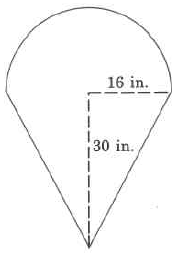9.7: Suplemento de ejercicio
- Page ID
- 116264
La medición y el sistema de los Estados Unidos
Ejercicio\(\PageIndex{1}\)
¿Qué es la medición?
- Responder
-
La medición es comparativa con un estándar (unidad de medida).
Para problemas 2-6, haga cada conversión. Utilice la tabla de conversión dada en la Sección 7.1.
Ejercicio\(\PageIndex{2}\)
9 pies= yd
Ejercicio\(\PageIndex{3}\)
32 oz= lb
- Responder
-
2 libras
Ejercicio\(\PageIndex{4}\)
1,500 mg = g
Ejercicio\(\PageIndex{5}\)
12,000 lb = T
- Responder
-
6 toneladas
Ejercicio\(\PageIndex{6}\)
5,280 ft= mi
Para problemas 7-23, haga cada conversión.
Ejercicio\(\PageIndex{7}\)
23 yd a ft
- Responder
-
69 pies
Ejercicio\(\PageIndex{8}\)
\(2 \dfrac{1}{2}\)mi a yd
Ejercicio\(\PageIndex{9}\)
8 pulg. a ft
- Responder
-
\(\dfrac{2}{3} = 0.66\overline{6} \text{ feet}\)
Ejercicio\(\PageIndex{10}\)
51 in. a mi
Ejercicio\(\PageIndex{11}\)
3 qt a pt
- Responder
-
6 pintas
Ejercicio\(\PageIndex{12}\)
8 lb a oz
Ejercicio\(\PageIndex{13}\)
5 tazas por cucharada
- Responder
-
80 cucharadas
Ejercicio\(\PageIndex{14}\)
9 da a hr
Ejercicio\(\PageIndex{15}\)
\(3 \dfrac{1}{2}\)min a seg
- Responder
-
210 segundos
Ejercicio\(\PageIndex{16}\)
\(\dfrac{3}{4}\)wk a min
El Sistema Métrico de Medición
Ejercicio\(\PageIndex{17}\)
250 mL a L
- Responder
-
\(\dfrac{1}{4} = 0.25\)L
Ejercicio\(\PageIndex{18}\)
18.57 cm a m
Ejercicio\(\PageIndex{19}\)
0.01961 kg a mg
- Responder
-
19,610 mg
Ejercicio\(\PageIndex{20}\)
52,211 mg a kg
Ejercicio\(\PageIndex{21}\)
54.006 dag a g
- Responder
-
540.06 g
Ejercicio\(\PageIndex{22}\)
1.181 hg a mg
Ejercicio\(\PageIndex{23}\)
3.5 kL a mL
- Responder
-
3,500,000 mL
Simplificación de Números Denominados
Para problemas 24-31, realizar las operaciones indicadas. Simplificar, si es posible.
Ejercicio\(\PageIndex{24}\)
Agregar 8 min 50 seg a 5 min 25 seg.
Ejercicio\(\PageIndex{25}\)
Agregar 3 semanas 3 da a 2 semanas 5 da
- Responder
-
6 semanas 1 día
Ejercicio\(\PageIndex{26}\)
Restar 4 gal 3 qt de 5 gal 2 qt.
Ejercicio\(\PageIndex{27}\)
Restar 2 gal 3 qt 1pt de 8 gal 2 qt.
- Responder
-
5 galones 2 cuartos 1 pinta
Ejercicio\(\PageIndex{28}\)
Restar 5 semanas 4 da 21 hr de 12 semanas 3 da 14 hr.
Ejercicio\(\PageIndex{29}\)
Restar 2 T 1,850 lb de 10 T 1,700 lb.
- Responder
-
7 T 1,850 libras
Ejercicio\(\PageIndex{30}\)
Restar la suma de 2 semanas 3 da 15 hr y 5 semanas 2 da 9 hr de 10 semanas.
Ejercicio\(\PageIndex{31}\)
Restar la suma de 20 hr 15 min y 18 hr 18 min de la suma de 8 da 1 hr 16 min 5 sec.
- Responder
-
7 días, 11 horas, 56 minutos, 7 segundos
Para los problemas 32-43, simplifique, si es necesario.
Ejercicio\(\PageIndex{32}\)
18 pulg.
Ejercicio\(\PageIndex{33}\)
4 pies
- Responder
-
1 yarda 1 pie
Ejercicio\(\PageIndex{34}\)
23 da
Ejercicio\(\PageIndex{35}\)
3,100 lb
- Responder
-
1 tonelada 1,100 libras
Ejercicio\(\PageIndex{36}\)
135 min
Ejercicio\(\PageIndex{37}\)
4 cdta
- Responder
-
1 cucharada 1 cucharadita
Ejercicio\(\PageIndex{38}\)
10 fl oz
Ejercicio\(\PageIndex{39}\)
7 pt
- Responder
-
3 cuartos de galón 1 pinta
Ejercicio\(\PageIndex{40}\)
9 qt
Ejercicio\(\PageIndex{41}\)
2,300 mm
- Responder
-
2.3 metros
Ejercicio\(\PageIndex{42}\)
14,780 mL
Ejercicio\(\PageIndex{43}\)
1,050 m
- Responder
-
1.05 km
Perímetro, Circunferencia, Área y Volumen de Figuras Geométricas y Objetos ([link], [link])
Para problemas 44-58, encuentra el perímetro, circunferencia, área o volumen.
Ejercicio\(\PageIndex{44}\)
Perímetro, área
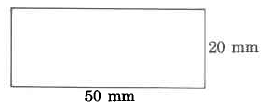
Ejercicio\(\PageIndex{45}\)
Circunferencia aproximada

- Responder
-
5.652 cm cuadrados
Ejercicio\(\PageIndex{46}\)
Volumen aproximado
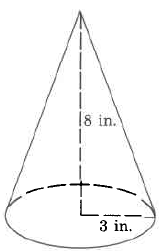
Ejercicio\(\PageIndex{47}\)
Volumen aproximado

- Responder
-
104.28568 pies cúbicos
Ejercicio\(\PageIndex{48}\)
Área exacta

Ejercicio\(\PageIndex{49}\)
Área exacta
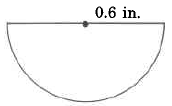
- Responder
-
0.18ππ pulgada cuadrada.
Ejercicio\(\PageIndex{50}\)
Volumen exacto
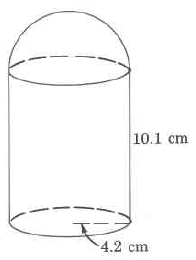
Ejercicio\(\PageIndex{51}\)
Volumen aproximado

- Responder
-
267.94667 cu mm
Ejercicio\(\PageIndex{52}\)
Área

Ejercicio\(\PageIndex{53}\)
Volumen
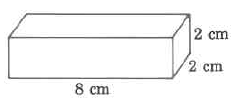
- Responder
-
32 cu cm
Ejercicio\(\PageIndex{54}\)
Área exacta

Ejercicio\(\PageIndex{55}\)
Área aproximada
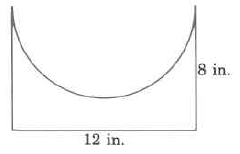
- Responder
-
39.48 pulg.
Ejercicio\(\PageIndex{56}\)
Área exacta

Ejercicio\(\PageIndex{57}\)
Área aproximada

- Responder
-
56.52 pies cuadrados
Ejercicio\(\PageIndex{58}\)
Área aproximada
